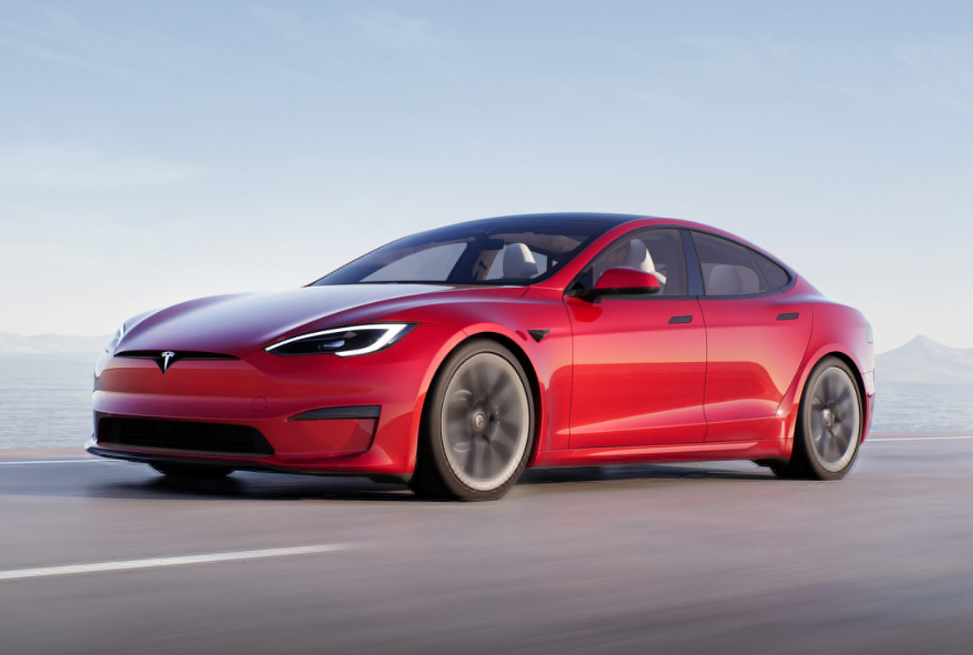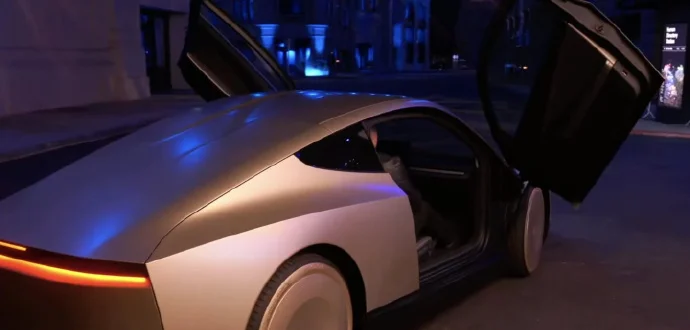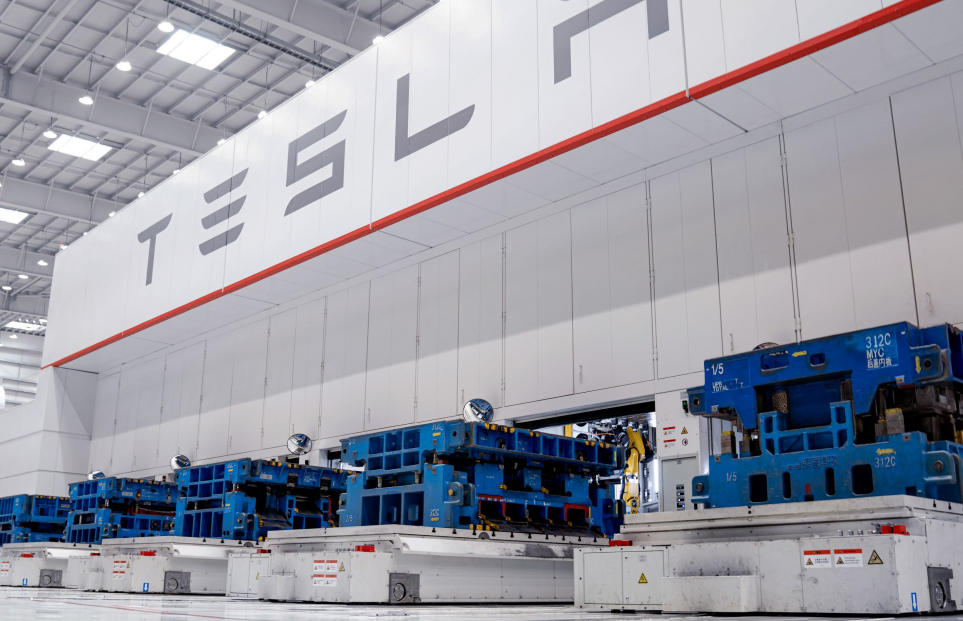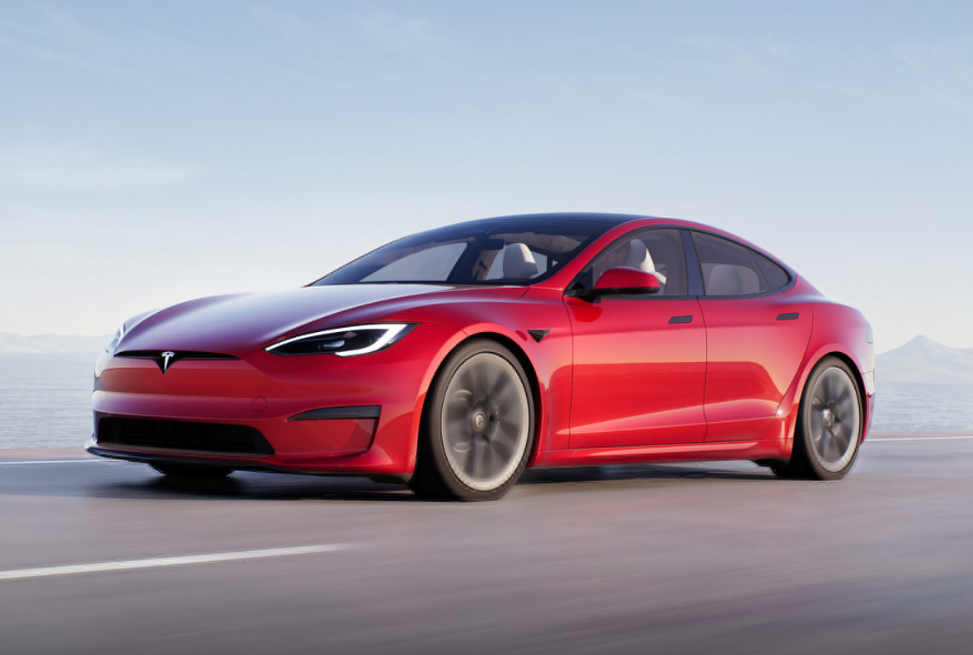在往期的集微访谈栏目中,爱集微有幸采访了从事汽车行业工作的Mathew Vachaparampil。他现任 Caresoft Global CEO。为全球主要汽车 OEM 及供应商提供数字李生和竞争评估服务。集微访谈就关于特斯拉、汽车芯片市场和车用芯片提出了一系列问题,并收到了一系列有关领域的专业答复。
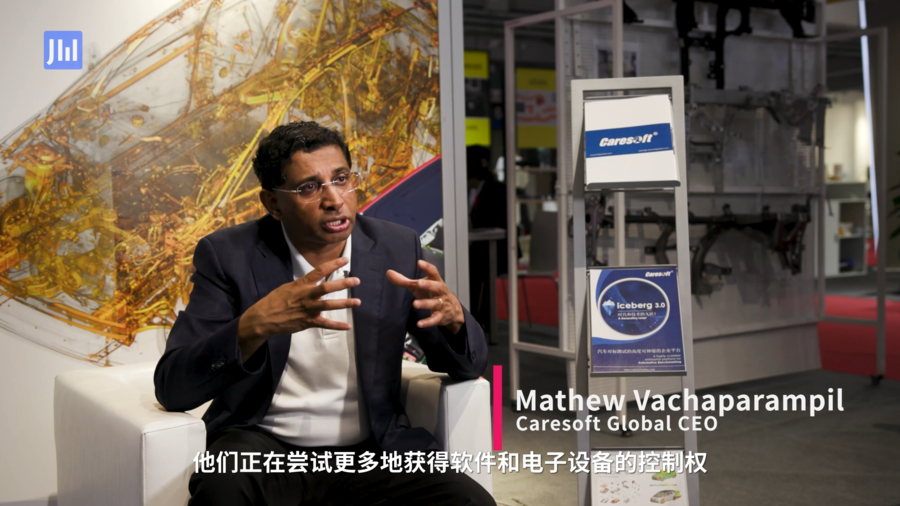
问:电子电气架构和软件将如何影响汽车供应链?
答:因此我们在行业中看到的是,特别是像特斯拉和Lucid这样的公司正在推动行业发展,他们正在从基于域的架构转变。在以前的架构中,可以分别进行动力控制、车身控制、制动控制、转向控制等,而且由不同的供应商提供相应的组件,如德国博世(Robert Bosch)、大陆集团(Continental)和日本电装(Denso)等。架构朝着分区或中央化的方向转变,而在新的架构中,车身控制模块能够承担多个功能。
例如,特斯拉已经将大量的软件工程引入公司内部,并且他们自己设计软硬件,将印制线路板(PCB, printed circuit board)的制造外包给深圳的供应商
我们认为,随着时间的推移,原始设备制造商(OEMs,Original Equipment Manufacturers)将逐渐将软件、车辆、电器和电子架构等方面带回公司内部,这将有助于降低线束成本和电子控制器单元(ECU, Electronic Control Unit)成本等。
0到1级供应商将失去对汽车电子技术架构的控制权等。而只是软件的一个方面。软件还有其他方面,比如完整的自动驾驶系统,还有人机交互和娱乐系统。自动驾驶系统中的雷达、不同类型的灯光等都是不同的系统。模块数量将增加,电子设备也将增多。而在人机交互方面,供应商需要与微信、苹果、谷歌等娱乐系统和技术进行整合,而这是一个独立的领域。
然而,总体来说,到2030年,每辆车的软件成本将从每辆车约300到500美元增加到每辆车约1000到1500美元。同样,电子设备成本也将从3000到5000美元增加到10,000到15,000美元左右。因为我们想要保持对成本的控制,原始设备制造商不愿意将其交给供应商,因为一旦交给供应商,他们就无法控制成本和价格。
问:在未来电子电气架构有什么发展趋势?
答:正如我刚才告诉你的,每辆车的电子成本和软件成本都将增加。我认为,在汽车的电器和电子架构方面,会出现融合现象,因为每辆车将拥有更多的功能,所以电子控制器单元的数量将减少。其中一张幻灯片显示了特斯拉在过去六年中如何从特斯拉Model X到Model 3再到Model Y将线束成本降低了550美元,而且他们减轻了10公斤的重量,减少了1公里的电线数量。这是由于体系结构的融合,他们减少了控制模块的数量,因此我们现在看到这种情况发生在高级驾驶辅助系统(ADAS, Advanced Driving Assistance System)和内部娱乐系统上。由于出现了新的领域,电子设备的使用肯定会增加。我认为这将是汽车行业未来发展的方向。
问:在 Caresoft Global,lceberg 数据平台是如何收集和分析车辆基准数据的?
答:Caresoft是一家工程公司,专注于为汽车行业进行基准测试。Iceberg是我们的数据平台,每年会对超过35辆车进行基准测试。Caresoft拥有一种独特的技术——高能扫描技术,这是一项拥有专利的技术,可以通过CT扫描车辆来获取整个计算机辅助设计(Computer Aided Design, CAD)和计算机辅助工程(Computer Aided Engineering, CAE)数据。它可以通过进行碰撞分析、各种仿真模拟来评估虚拟性能,同时也能够评估成本。实现性能的成本。我们每年在世界范围内对来自美国、欧洲、中国、日本、韩国、印度等地的超过35辆车进行基准测试。我们在世界各地拥有超过七个技术中心,这些数据帮助我们的客户了解市场上最新的技术动向。
以及成本是多少?此外,我们还有一个名为DeltaCosting™的平台,它可以分析车辆设计和成本,并提供如何以最低成本获得最佳性能的建议。因此,这就是客户使用我们数据的原因。Caresoft极大地专注于帮助我们的客户改进技术,同时也降低成本。
问:AI对帮助客户进行成本分析的前景如何?
答:当我们已经有了数据和观点,尤其是我们有虚拟仿真:我们可以模拟最后能获得多少性能,我们有数据,同样也有成本数据。我们正在研究将人工智能应用于这个领域,以便找到最佳解决方案,就像今年早些时候推出的ChatGPT一样,在人工智能方面取得了巨大的成功。随着我们获得更多智能数据,包括设计、性能和成本等参数化数据,我相信人工智能有巨大的应用前景。请继续关注我们,并期待未来会有哪些新进展。
问:您能否预测未来汽车主机厂的并购趋势?
答:这个问题非常具有挑战性。原因是车辆、电子电路和软件系统的发展方向都非常清晰,并且向内部集成。就自动驾驶辅助系统而言,我对美国的情况非常熟悉,我们有更多,所以我们有自动化巡航等等。但是,实现L4、L5自动驾驶非常困难,我们不知道谁将成为赢家。另外,特斯拉在这方面也是一股强劲的竞争力量。在中国,百度、华为等各种公司也在研究自动驾驶系统,因此很难预测谁将在这个领域获胜,因为现在玩家太多了。从原始设备制造商的角度来看,原始设备制造商将购买解决方案,但他们需要充分整合软件和电子架构,以使其无缝运作。这就是我能告诉你的。此外还涉及到与人机界面和客户技术的整合,例如微信、百度、苹果等等。控制数据是一个重要的方面,这些领域仍处于开放状态,我们仍然无法确定其中的规则。
问:芯片短缺如何影响汽车供应链?
答:在过去的两年中,由于缺芯的发生,许多原始设备制造商不仅仅只看ECU,他们关注每一颗芯片。例如,他们在T-BOX、 ECU上面向博世和电装这样的公司采用双重采购策略,但却发现这些公司使用了相同的芯片,这意味着芯片没有采用双重采购策略,这就存在风险。因此,现在原始设备制造商正在考虑整个芯片的生命周期,并试图确保有双重采购策略。正如我之前提到的,他们正在尝试更多地获得软件和电子设备的控制权,因为他们不想外包。这对于作为原始设备制造来说是其未来发展的核心。如果公司想要生存下去,就必须了解技术,不能只关注车身、底盘或者机械加工流程,而忽视了电子、软件和技术。这是汽车的关键所在。我认为原始设备制造商会在这个领域上掌握更多的控制权。
你谈到了福特F-150 Lightning由于芯片短缺所导致的问题。正如我所解释的,他们希望降低电子和芯片领域的风险。在吸取教训后,许多原始设备制造商现在正在内部开发软件和设计电子设备,以便在零部件方面拥有多个供应来源,不再依赖供应商,这就是我对此事的看法,而他们也正在密切与芯片制造商合作,签订长期合同等等。
问:如何评价特斯拉持续降低产品成本?
答:例如,在车身、电子电路、控制模块等各种系统中,我们看到特斯拉正在大力推动成本下降。并且特斯拉宣布他们想要减少汽车生产成本的50%,他们正在采用模块化的生产系统,我们认为他们可以实现自动化生产线,并减少涂装车间等投资规模。
同样地,他们正在探索各种技术,例如采用宁德时代(CATL)的磷酸铁锂电池,使用碳化硅芯片在动力系统中。我不知道特斯拉减少75%的碳化硅使用这一说法是否正确,但我可以告诉你,特斯拉非常注重保持汽车性能不变,力求以更低的成本提高性能。因此,就性能与成本而言,特斯拉确实是当今行业的基准。
Q:as the ee automotive architecture gradually become centralized. Software programs are clearly becoming more crucial to the car, still believe the law of gears, too, is evolving a lot.How will Electrical/Electronic Architecture and Software Impact the Automotive Supply Chain?A:So what we are seeing in the industry, especially with companies like Tesla and Lucid, they are moving from as a domain based architecture, where you do power train controls, body controls, brake controls, steering controls separately, and you have different suppliers, steer ones. It could be Robert Bosch, Continental and Denso supplying these components. To an architecture, which is moving more zonal or central, where body control modules are doing these multiple functions.Tesla, for example, has brought a lot of this software engineering in house. And then they design both the software and the hardware and they are outsourcing the manufacture of the PCB boards to suppliers in Shenzhen We feel over time that when we look at the software or the vehicle, electrical and electronics architecture, OEMs are going to bring that in house which will reduce harness cost, ECU cost and so on.And 0 to 1 suppliers will lose control and so on. Now this is one part of the software, but there's other parts of the software, too. There is a whole autonomous system. There's also the HMI and entertainment systems. The autonomous systems are, do you have radar? Light are different systems there. The modules will increase, the electronics will increase. And then HMI you have integration with Wechat, with Apple, with Google, with all these entertainment systems and technology there. That is a separate avenue to go.However, overall, the software cost per vehicle is going to go from around 300 to $500 per vehicle to around 1000 to $2,500 a vehicle by 2030, same way, electronics is going to increase from 3,000 to $5,000 to maybe 10 to $15,000. The OEMs, because we want to keep control of this. Because if they give it to suppliers, they have no control on the cost or the price.
Q:Previously, the number of ecus was limited and they were all isolated from each other. Each ecu has one specific function of which features were simple and basic. But now the new features and new safety countries require a lot of additional using vehicles. Could you estimate how the cost of milk will be effective with an increase of the ccu。What is the development trend of Electrical/Electronic Architecture in the future?A:As I told you, just now, the cost of electronics is going to increase per vehicle, the cost of software is going to increase. I feel in the electrical and electronics architecture for the vehicle, there's going to be convergence, so the number of ECUs is going to reduce because you're going to have more functions per vehicle. One of the slides that I will show here, show you, shows how Tesla has reduced the cost of harnesses by $550 in the last six years from Tesla X to 3 to Y. They have reduced the weight by 10 kilos. They reduce the amount of wire by 1 kilometer. That's because of the convergence of the architectures, and they've reduced the number of control modules, so we see that happening now on the ADAS and the entertainment inside. Because there are new areas, electronics will increase for sure. This is the way I think that the industry will head.
Q:At Caresoft Global, how does Iceberg data platform gather and analyze vehicle benchmark data? Caresoft Global ,Iceberg What’s the methodology of Iceberg regarding gathering and analyzing the benchmarking data?
A:So Caresoft is an engineering company, but we do a lot of benchmarking for the automotive industry. Iceberg is our data platform where we benchmark over 35 vehicles a year. Caresoft has something unique. We have something known as a high-energy scan, which is a patented technology where we can see this scan the vehicle. From that, we can get the entire CAD and CAE data. This allows you to do evaluate virtual performance by doing crash analysis, doing various simulations virtually. That allows you to also evaluate cost. Performance was this cost. We do around the benchmark over 35 vehicles a year around the world, United states, Europe, China, vehicles from Japan, Korea, India, and so on. We have over seven technology centers around the world, and this data helps our customers with the what is to understand what is the latest technology in the market.And also what is the cost? we have a platform called Deltacosting which looks at the vehicle design and the cost. And they can also see how can we get the best performance for the lowest cost, so that is what they use our data for. Caresoft is focusing tremendously on helping our customers improve technology, but also reduce cost. And speak slowly.
Q:What is the promise of AI for helping customers with cost analysis?
A:When we look at all our data and the intelligence, and especially since we have virtual simulation, which is we have performance, what's your performance? We have data, and we also have cost. We are working on some technologies to integrate AI into this so that we can find the right solution for like ChatGPT earlier this year was huge in terms of launch from an AI perspective. As we get more data and there's intelligent data where we have parametric data which looks at design, performance and cost, I definitely feel there's a huge application of AI and you can stay tuned to us and see what's going to happen in this space.
Q:Could you forecast the M&A trend of automotive OEMs in the future? Thank you. So presumably, the large of the boy to the old hands with many resources will design the software in house and develop our relationship with the peer ones for all the basic of the most automated driving agency. Could you forecast the mergers and accusation trend of a motive OEM in the future?A:This is a tough question. And the reason is there is a clear direction on the vehicle, electrical electronics and software systems. It's in house. I've explained to you, on the ADAS systems, I'm very familiar with what is there in the US we have way more, so we have cruise automation and so on. They are finding level four, level five, very difficult. We don't know who's going to be the winner.Then there's Tesla. Here in China, you have various Baidu and so on, Huawei all looking at autonomous vehicle systems, so it's very difficult to predict who's going to win this strategy, the platform strategy here. So I don't know the answer to that, but there are many players here. How does it affect things? From OEM perspective, OEM will buy the solution, but they need full integration with their software and electronics architectures so that it functions seamlessly. That is what I can tell you. And then there's a whole technology place of integrating with the HMI and customer technologies. Be it. Wechat be it, Baidu be it, Apple. Controlling the data is a big piece. So that's a whole piece that we don't know it's still the wild west in these areas.
Q:Thank you. So did you have your ratio of automotive cheap shortages? Automotive OEM are driven to work with the team makers more close? Only before, because possibly their honorable could be faced at all . by a tiny MCU how they built across the evaluation system is influenced by such a phenomenon, okay?How is the chip shortage affecting the automotive supply chain?
A:With the chip crisis that happened in the last 2 years, a lot of OEMS are not only just looking at the ECU, they're looking at every chip. For example, they were a dual source to T-box, ECU, to say, Bosch and Denso. But they find out they use the same chip, but then there's no dual sourcing strategy. There's risk. So OEMs now are looking at the whole chip life cycle in them. And they are trying to make sure there's a dual sourcing strategy. And as I mentioned earlier, they're trying to get more control of the software and electronics, because they don't want to outsource. This is core to the future of the company as they be as OEMs. If you're to survive, you have to be understand the technology. You just cannot build a body or chassis to the mechanical process, the electronics and the software and the technology. That's the crux of the vehicle. I feel that OEMs are going to take more control of this area.You talked about the F-150 Lightning that is because of chip shortage. As I explained, they want to de risk the electronics and chip area. Having learned their lesson, a lot of OEMs are now insourcing the software and also the design of the electronics. So that they have multiple sources for the components, and they are not relying on suppliers. That's the way I see this and so on. And they are also working very closely with the chip manufacturers for long-term contracts and so on and so forth.
Q:Thank you. And tesla revealed our plan for reducing, as I see devices in our train by 75 % without any more illustrations. Is there any substance or spencer goal behind what they are claiming and how to interpret the number of 55 %?What do you think of Tesla Continue To Reduce Cost of Existing Products?
A:Okay. We are seeing, for example, in various systems, in body, in white, in electrical electronics, in control modules, Tesla is really pushing the envelope to take cost out. And with Tesla making the announcement that they want to reduce 50% of the production of the car, now they're going to a module bullet system where we think they can automate the assembly line and reduce the size of the investment for paint shops and so on.Same way, they're looking at various ways in technology like they move to lithium-ion-phosphate batteries with CATL, they are looking at silicon carbide chips in power train. So I don't know whether the 75 % is correct or not that I don't know. But what I can tell you is Tesla is extremely aggressive about keeping the same performance, increasing the performance for a lower cost. So Tesla is really the benchmark in terms of performance versus cost in the industry today.



